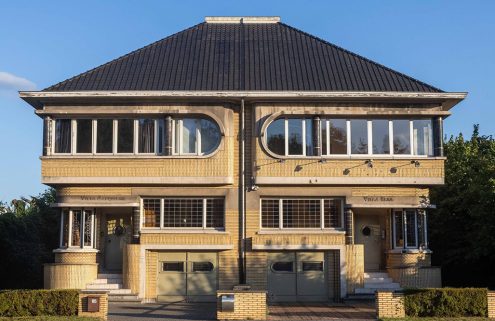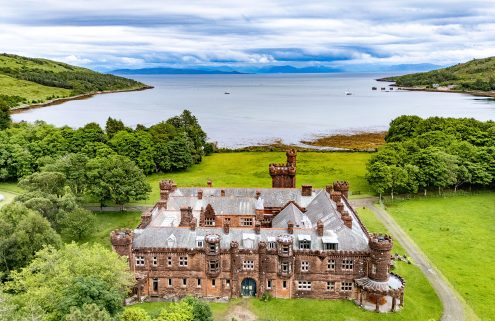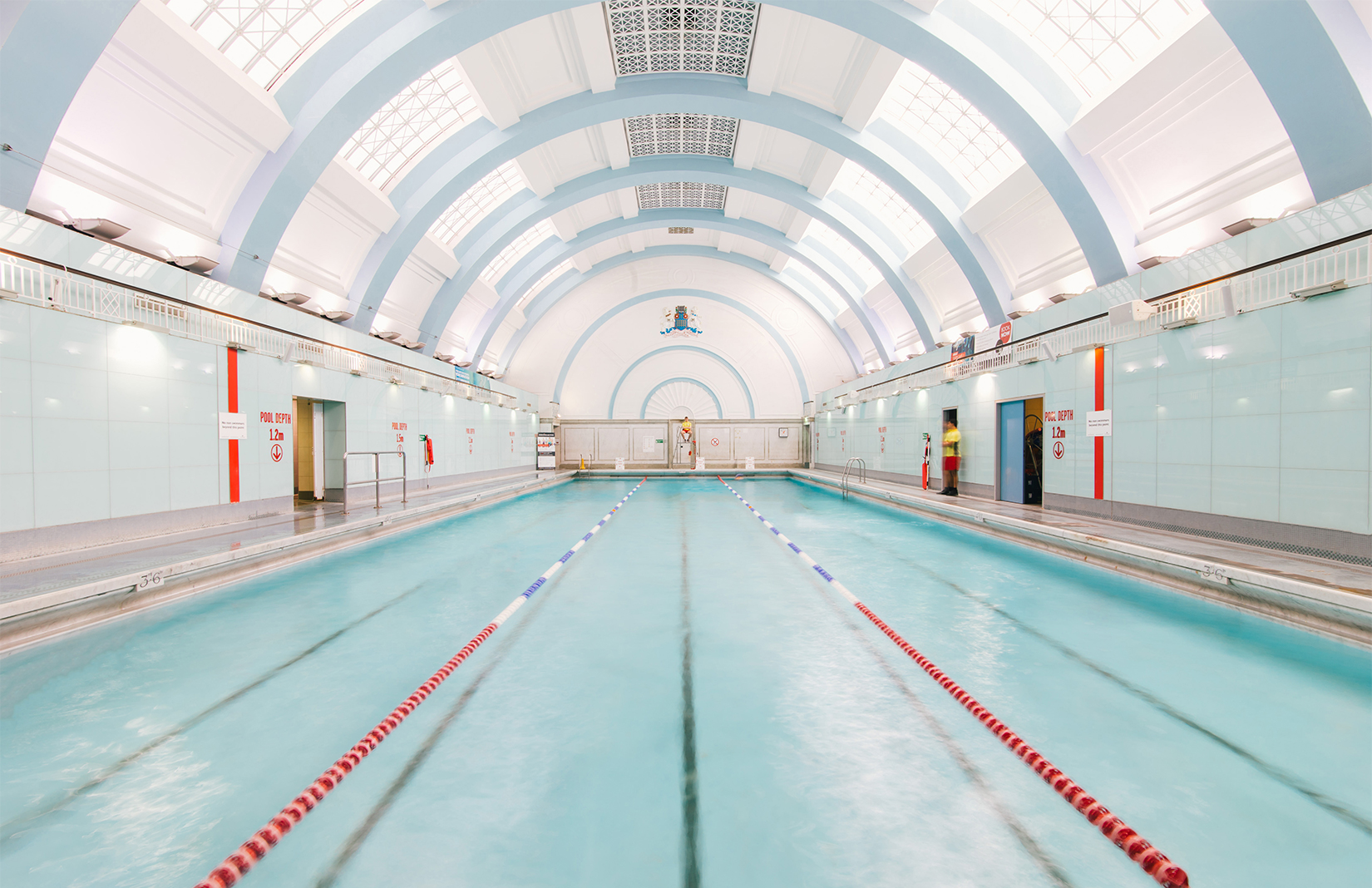Britain’s historic public pools are enjoying a renaissance. After decades of neglect, lidos, swimming pools and bathhouses across the country have been polished for the 21st century.
It was the Victorians who instigated the British love affair with communal bathing via the 1846 Baths and Wash House Act, which kickstarted nearly a century of municipal pool design. The UK has the largest stock of historic swimming pools in the world, although only 52 of Britain’s 116 listed bathhouses are still operational today. These architectural time capsules range from Victorian baths for the ‘great unwashed’, to Art Deco lidos that are as glamorous as they are vast.
Dive into nine of the UK’s best…
Marshall Street Baths, London (1931)
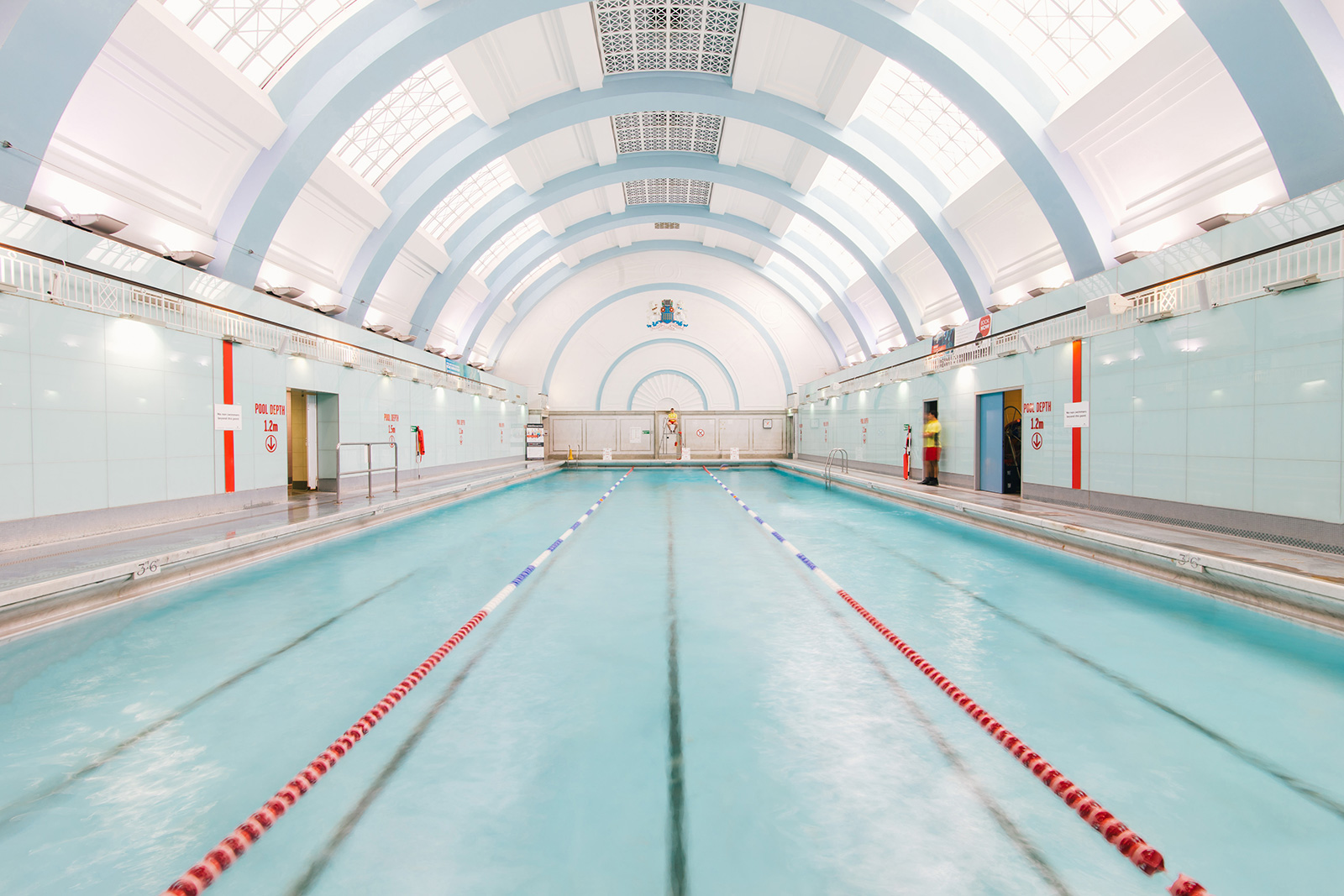
Marshall Street Baths are Soho’s best kept secret. Opened in 1931, the building was designed by the leading pool architect of the era, Alfred Cross. Its iconic gala pool – lined with creamy Sicilian marble and underneath a glorious barrel-vaulted roof – was loving restored by Finch Forman in 2010.
Warrender Baths, Edinburgh (1886)

Warrender Baths exert an air of sophistication over their fellow Scottish pools as the building in which they’re housed was constructed as a luxurious private club in 1886, rather than civic wash house. Thankfully, the structure retains much of its original detailing, including a red stone Vitruvian arch which welcomes bathers into the pool. The glass-vaulted ceiling has also been restored.
Tinside Lido, Plymouth (1935)
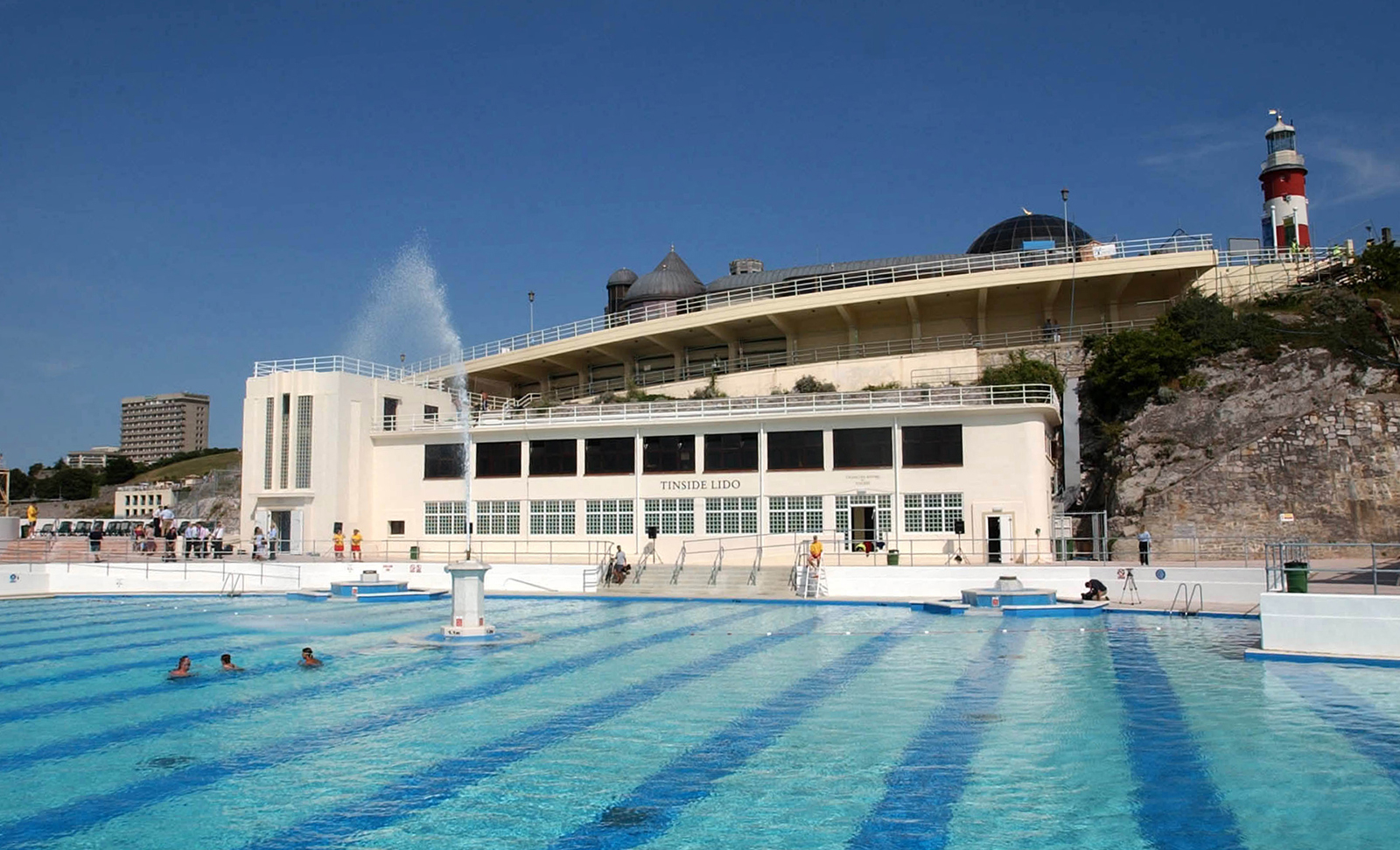
Tineside Lido is an icon of municipal 1930s glamour and once wielded the same exoticism as Ibiza. Epitomising the fashionable ‘healthy public resort’, the Grade II-listed lido promised not only health and hygiene but sun-soaked sexiness too. It reopened in 2005 after a £3.5m refurbishment, and is an Art Deco enthusiast’s dream with its sun terraces, projecting fountains, outdoor bandstand, night illumination and pageant stage.
Mount Baths, Northampton (1936)
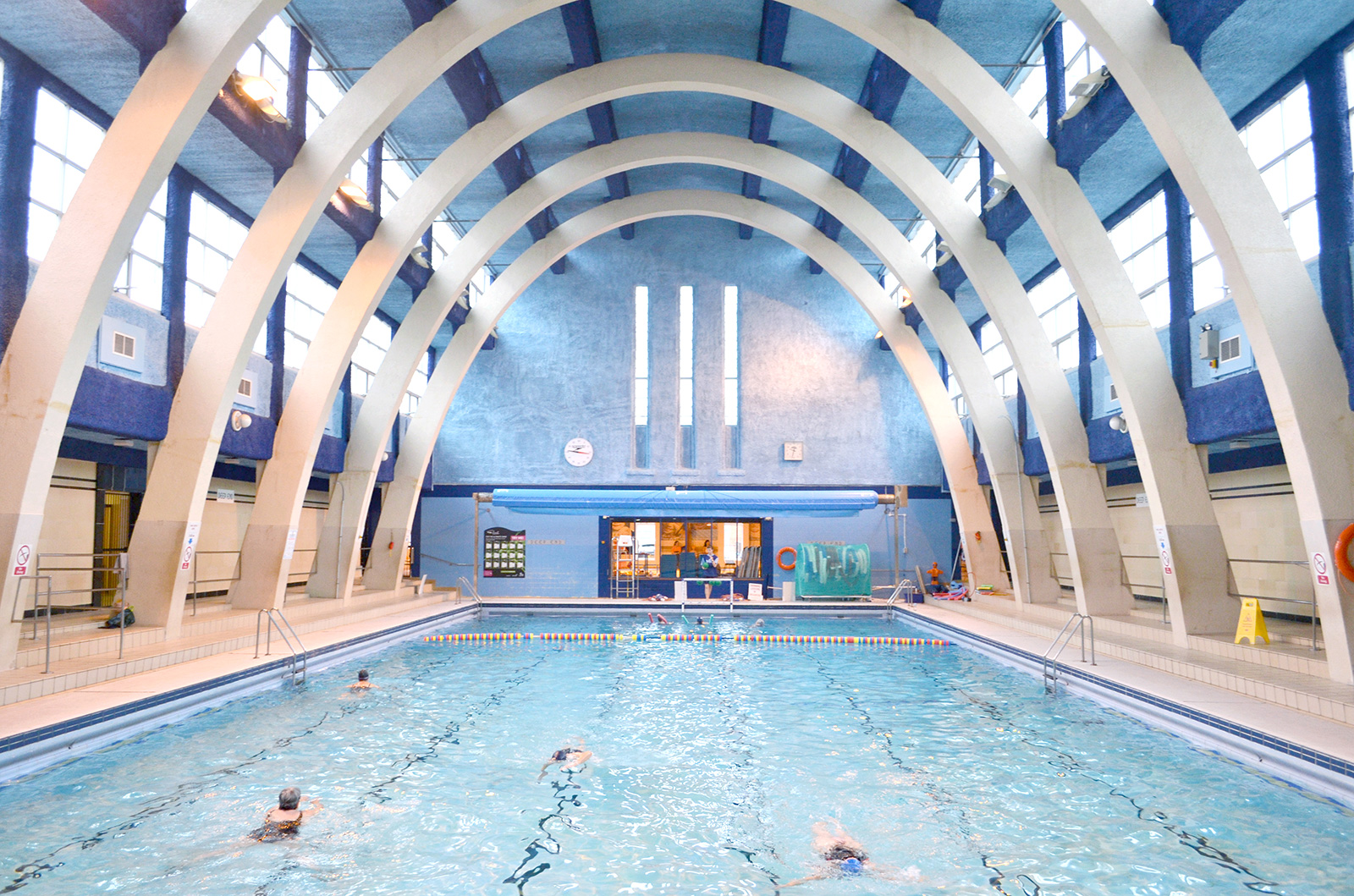
Mount Baths are considered the apogee of 1930s Art Deco pool architecture, thanks to the building’s parabolic arches and chapel-like atmosphere. Designed by architect Ernest Prestwich under the patronage of Modernist advocate WJ Bassett-Lowke, the swimming pool was part of a Northampton’s Modernist civic centre and built as a statement of municipal pride.
Saltdean Lido, Brighton (1938)
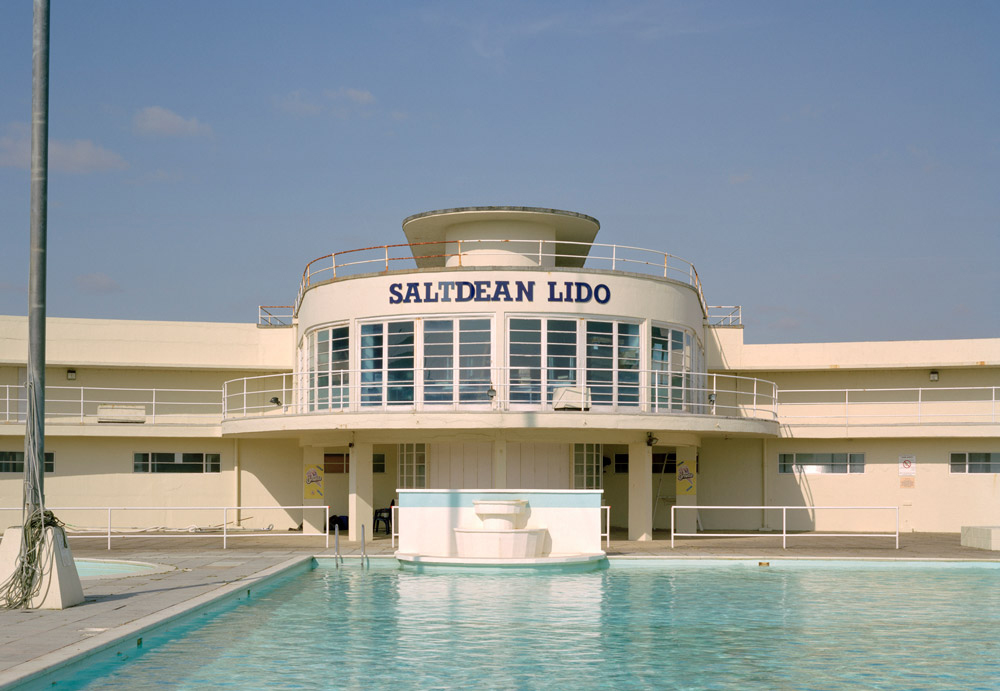
Dubbed ‘one of the seven wonders of the English seaside’ by Historic England, the Grade II*-listed Saltdean Lido was designed by RWH Jones in 1938 in a Streamline Moderne style. The building’s curvilinear form was likened to an ocean liner, and it boasts a 40-metre swimming pool which has recently reopened following a £3m, seven-year restoration. Work continues on restoring the rest of the building.
Kentish Town Baths, London (1903)
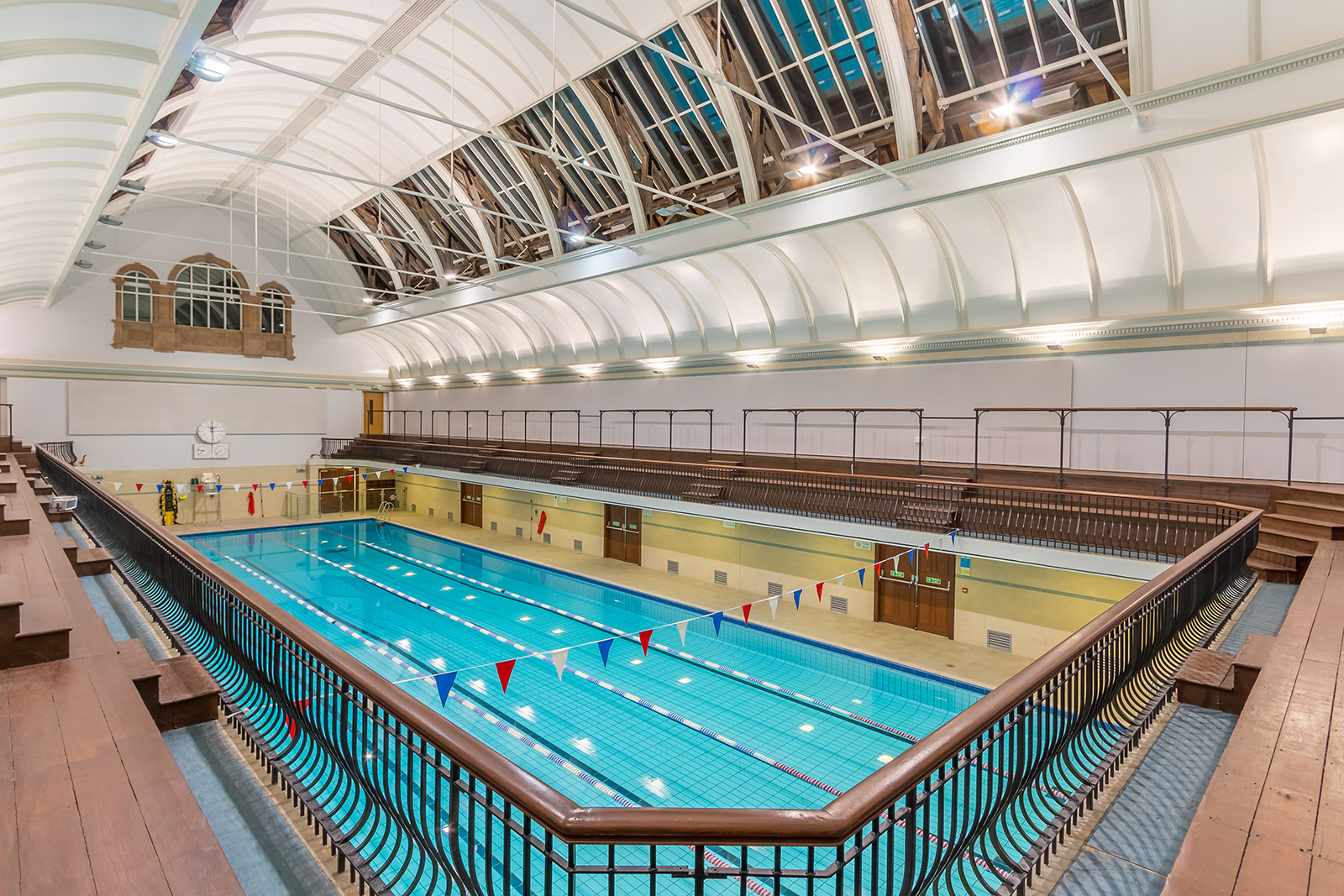
Kentish Town Baths is a rare pre-1914 bath house. When built it unusually offered women’s facilities but the first class men’s pool was the most spectacular space in the Edwardian complex. The Wiles pool featured a hammerbeam roof shaped in a trefoil profile and a tiered spectator gallery. Luckily, the 2010 restoration by Roberts Limbrick Architects ensured it was returned to its Victorian splendour.
Porchester Spa, London (1925)
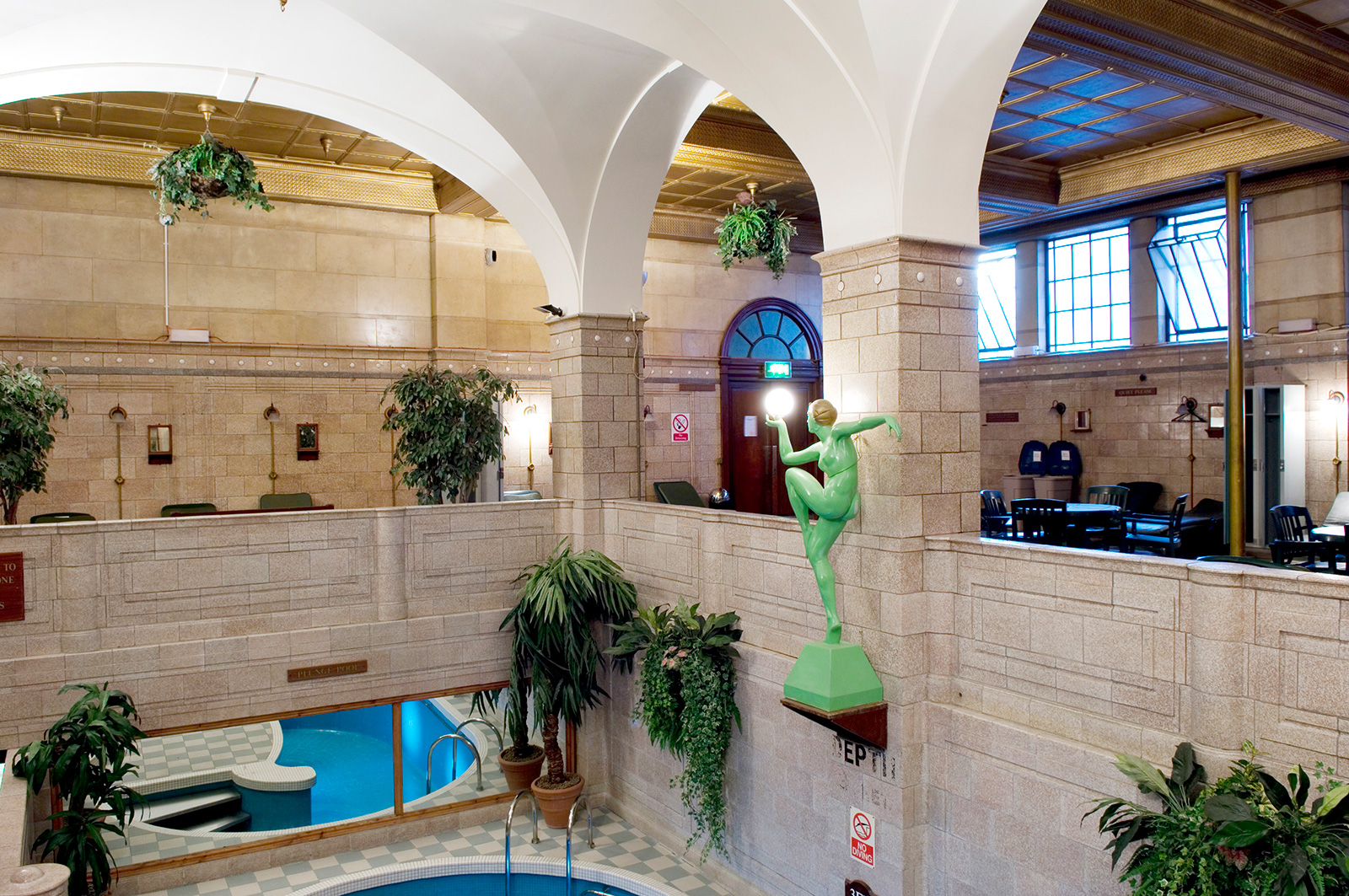
Sir Nikolaus Pevsner once described its facade as ‘flabby Beaux-Arts Baroque’, but that hasn’t put off Porchester Spa’s loyal clientele. Having resisted dramatic renovation over the years, much of its original detailing is intact. It also boasts a grandiose pool complete with vaulted roof, unusual oval windows and glazed terracotta panelling.
Jubilee Pool, Penzance (1935)
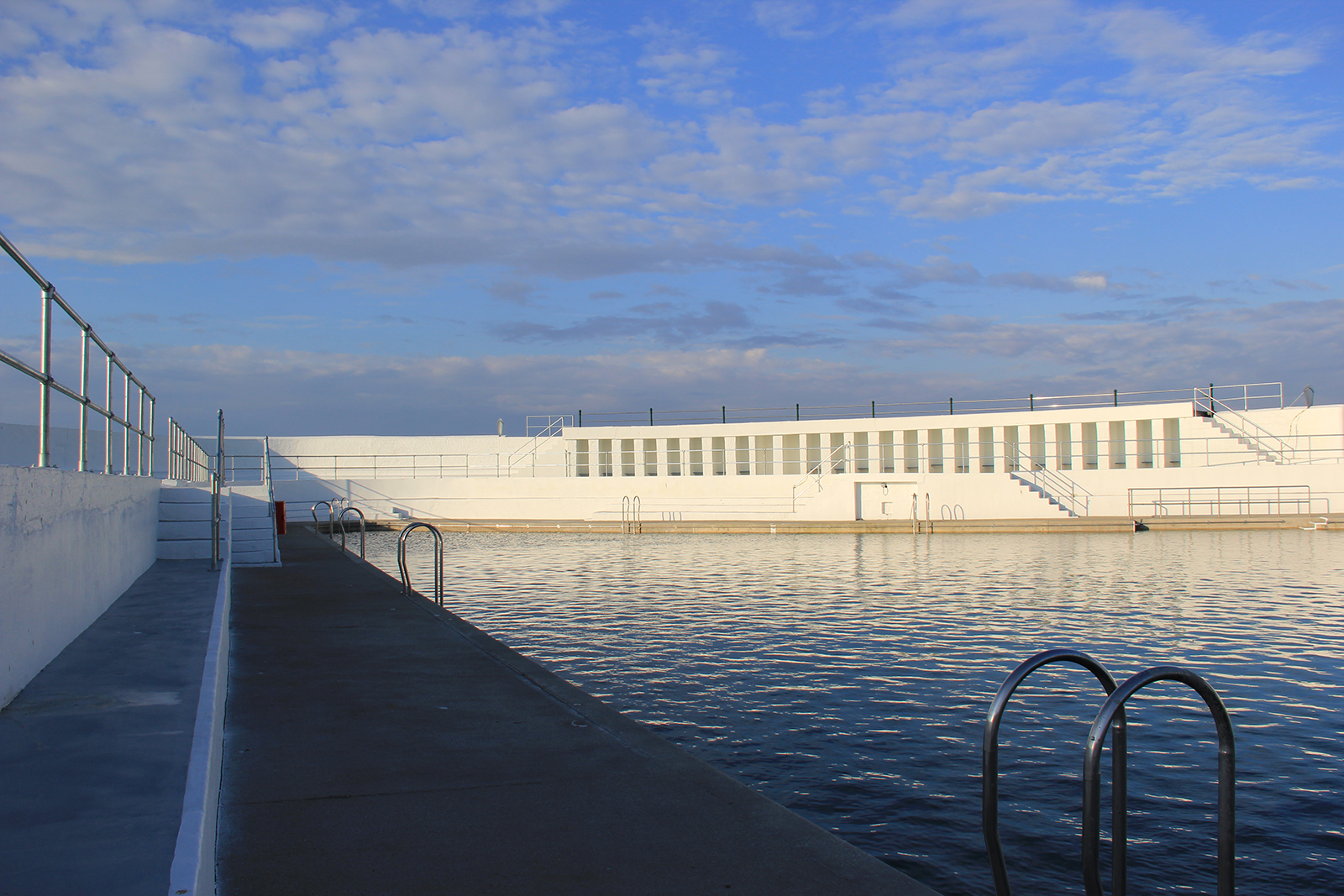
Inspired by a ‘gull alighting at sea’, Captain Latham built the Jubilee Pool in 1935. Its pleasing series of curvilinear concrete terraces jut out to sea in a triangular formation. Recently refurbished to the tune of £3 million, the Art Deco lido encapsulates the spirit of Modernism.
Victoria Baths, Manchester (1906)
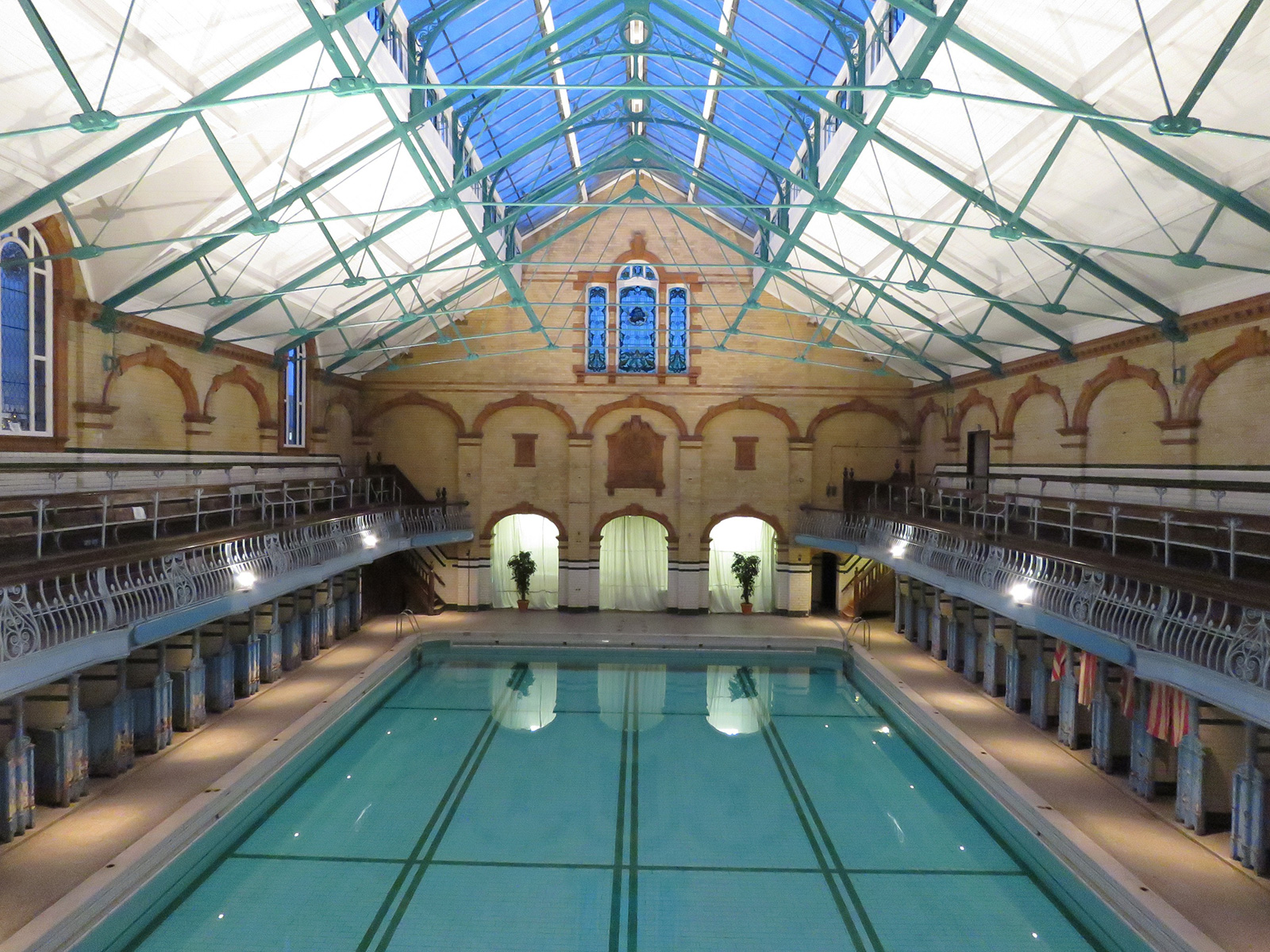
Opened in 1906, the Victoria Baths were hailed ‘the most splendid bathing institution in the country’. Only the finest materials were used in the building, designed by Henry Price to showcase the profits of Manchester’s booming industry. The Art Nouveau stained glass, exotic emerald tiles and marble-lined Turkish baths made the Edwardian structure the proverbial ‘Rolls-Royce’ of bathing. The building is being restored in phases, and you can take a guided tour every Wednesday. Currently, you can only swim in the Victoria Baths on special occasions.
Read next: Berlin’s best swimming pool architecture


